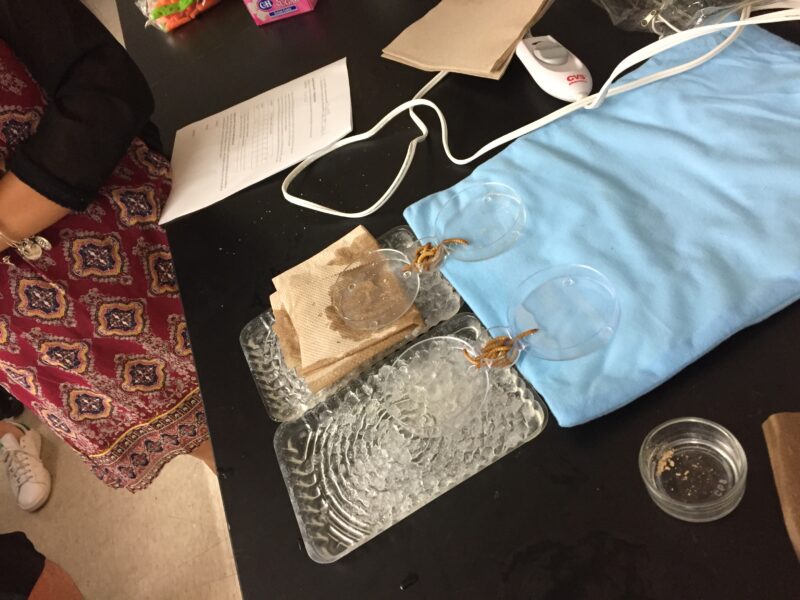The penultimate day of the summer term! Compared to some of our other days, this one was pretty low key, but we did have a little unexpected adventure.
I’d intended to lecture on ecosystem services in the morning, and then watch one of my favorite “teaching” films, “Hurricane on the Bayou.” And this is mostly what happened, except for a little detour part way through. When I arrived on campus, I noticed some flyers posted in the science building – one of the biology grad students, Vanessa Dodge, was giving her thesis defense. Not only was I really interested in her research, as I’d been up to the field site in Point Reyes a couple of times, but I also thought this would be a good way for my students to learn a bit more about the process of science. So, I gave them the choice – do you want to listen to me lecture all morning? Or do you want to go hear someone else talk for a while? They voted in favor of variety, so about an hour into the day we headed upstairs to the thesis defense.
Taking them was, I think, a good experience for them. The talk was good – she did her research on the effects of tule elk on soil composition, so it was very ecology focused, and not too technical. And my students were a great audience! So, that was a little bit of serendipity for our last week.

Eventually, though, I did finish up the ecosystem services lecture, and then we watched “Hurricane on the Bayou.” It’s a beautifully filmed documentary about Hurricane Katrina, and the ways in which the loss of natural coastal habitats led to more severe storm damage than would have happened otherwise. Probably the most interesting thing about this film, though, is the circumstances under which it was made. They’d actually started filming it some time before the hurricane hit, and obviously had no idea that Hurricane Katrina would happen when she did. The original intention was to talk about the importance of wetlands, and the need to conserve them, to protect against a “big one” that could hit in the future. But part way through filming, in August of 2005, Hurricane Katrina happened, and the film changed from something more theoretical into video documentation of the disaster and some of the people whose lives were devastated. There’s an authenticity about it that is remarkable, and disturbing, and really gets the point across: preserving ecosystems and the services they provide is so crucial to human well-being. I highly recommend this film, even though it can be difficult to watch at times. (All photos © MacGillivray Freeman Films)






After lunch, we started talking about human populations, including an activity on population growth. This makes an easy transition to our next topic: food security, but we didn’t get all the way through the lecture . . . I decided to save one of the most interesting topics for the next day: GMOs. Oh yeah. That’s always an entertaining lecture. 🙂
ETA: Somehow, I never quite managed to write up the post for Day 15 of the semester, so instead of trying to put something together now, I thought I’d just update this post with a quick wrap-up. On the last day of the semester, after our final lecture (on GMOs), we revisited the scientific method, by conducting experiments on mealworms. I provided the class with the worms, and some various materials, and allowed them to formulate their own research questions and experimental protocols, and then conduct the experiments. Among other things, we discovered that mealworms will move toward light surfaces (instead of dark ones), and warmth, rather than cold. It was a nice final lab for the semester.


Of course, the last thing on the syllabus was the final exam, which we completed in two phases. There was the more traditional write-on exam, but we also did a sort of lab “practical” . . . I took the students on a walk around campus, and asked them questions that would allow them to demonstrate their knowledge about various things we’d learned during the course of the semester. For example, they had to talk about the different evolutionary adaptations of plants, to identify a couple of birds using a very simple “field guide” I created, and describe the genetic relatedness of these baby ducks to their parents.



It was a fun way to end a genuinely fantastic “semester.” And . . . every single one of my students earned an “A.” That’s never happened (for me) before. 🙂
Selected Materials
110 Hurricane on the Bayou
110 Population Growth
115 Campus Walk SP17

